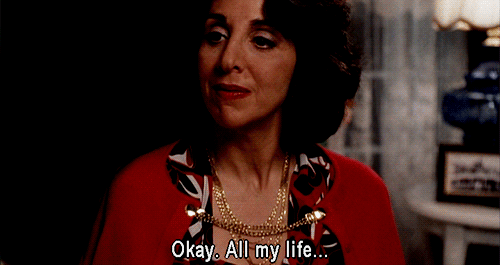Sometimes I swear my mum’s family are just loud, connector-breeding eaters in society’s many circles. (OK, I sort of used a Big Fat Greek Wedding quote there, but it just sounded so good in my head). Connectors, as we can appreciate online, are nodes with (to quote Sophie – add wiki link here) “an anomalously large number of links”. My family know everyone. No, I’m not kidding… they literally know everyone. We will be out with my mum or uncle, or grandpa, and they’ll meet up with at least 4 people they know. Sometimes, my mum will think she knows someone, talk to them, make about 3 connections about how they should’ve already met but hadn’t, then continues on before meeting another person in the same way just an hour or two later. It’s ridiculous the way this happens! So, my mother is definitely a connector in society.

Barabasi reflected in his work ‘Small Worlds’ that we are all linked to one another, to new ideas, opportunities, work and recreational activities by a few weak ties (AKA what we call acquaintances… those people who you know, but like, don’t really know. You know those ones that you’re like, OMG I KNOW YOU…. Oh crap, what’s his name again?
We’ve all got our bubbles….

Mmmm bubbles… mmm networks
Anyway, so bubbles… we’re in one all the time… even if it’s just our own. Another concept of bubble is essentially your close-knit group, whether the people you sit with at school, the people you always partner and group with at uni, your outside group of friends, family or flat mates. In this ‘inner circle’ our relationships are BOLD LINES as Sophie and Barabasi (hyperink here to external material of Barabasi’s reading) explain. In this inner circle there is not much room for meeting complete randoms and building connections with the outside world and other groups of friends.
I have some friends who move in the same group, generally our old school girl group, and our matching brother school group. A few of us have tried our best to move away from this and make other connections, as things can get a bit stale after all those teenage years. I guess, you would call us the group’s connectors, as we bring new people into the group and provide a linking arm to the outside world (or at least to RMIT and outer suburbs world).
But, at the same time, these ties I make outside my group are not always strong. In fact many are just above acquaintances. Because, you can’t have that many inner circle friends for the system to work properly. The idea is that WEAK TIES play an essential part of communicating beyond our bubble. These are the connector properties.
Social media helps us to build weak ties across an online platform. As Sophie explains, properties of social media e.g. Facebook, such as the ability to ‘LIKE’, ‘TAG’, and ‘FOLLOW’ subtly push us to take part in “rhythmic applause”, coordinating links between many others not directly involved with us.
Facebook, Instagram, Twitter and even dating sites like Tinder are weaving their way throughout society, publishing social ties/ acquaintances and “igniting” empty links (SEE WEEK TIES^).’

Sophie’s right – humans, we all love making connections, we can’t help it. Unless you’re on the autism spectrum which CAN weaken this, humans have an extremely strong need to associate with others around them and beyond them. My cousin’s girlfriend added me on Facebook the other day, and the first thing I thought was, ‘Man, I’ve only met her once and I don’t know her from a bar of soap! Why’she addin’ me? But, here we are… a classic weak tie, but because her boyfriend is my cousin, she’s decided to add me.
I once had a thing for a guy in one of my classes and because I saw him out and we talked for all of 2 minutes I stupidly added him on Facebook, messaging him saying, ‘You’re in my ******* class right?? Omg small world!’ I think I’m more judging of myself that I actually wrote O M G more than the fake tie actually.
